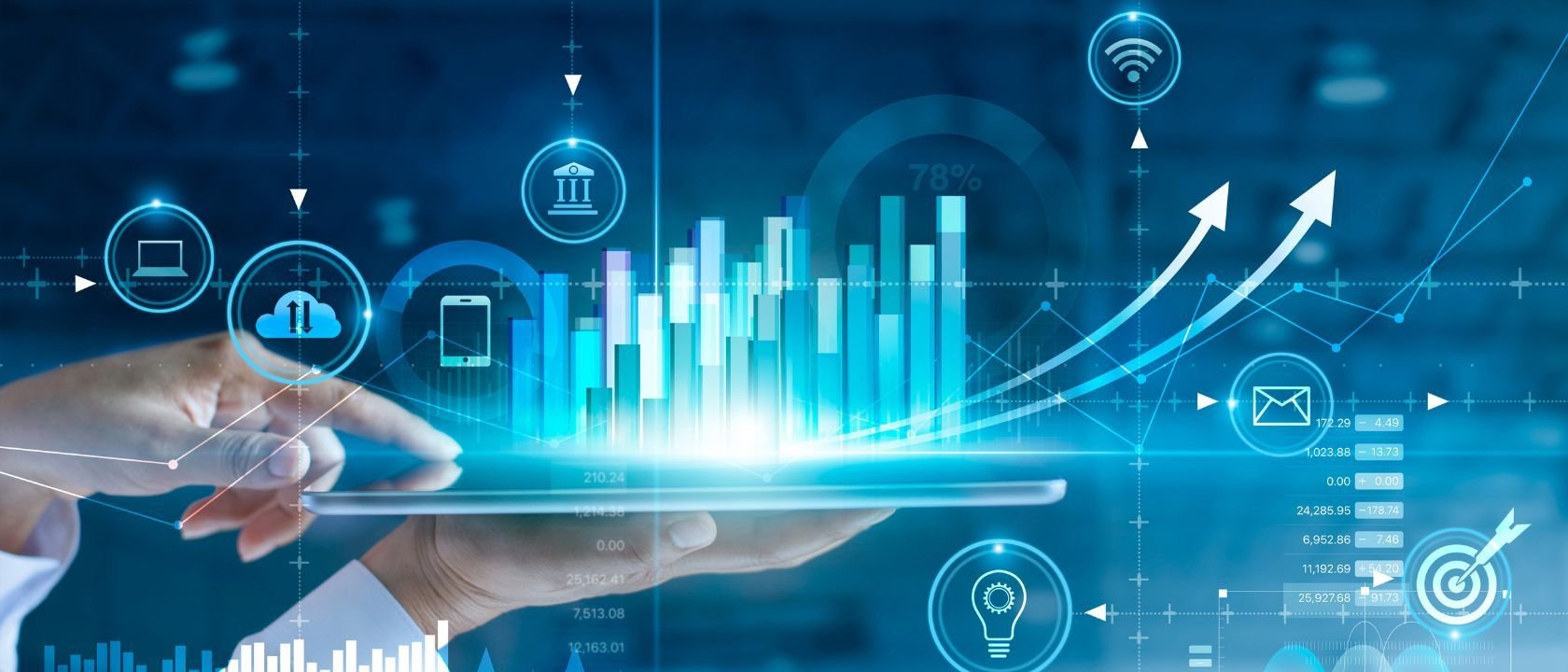Will public relations be replaced by AI?
The digital revolution has ushered in an era where artificial intelligence (AI) is transforming industries, automating tasks and redefining what it means to work in technology-dependent fields. In the realm of PR, a profession deeply rooted in personal interaction and communication, the question arises: Can AI replace the touch of a human PR specialist?
AI's infiltration into the PR sector is already evident, with tools and technologies being utilised for data analysis, media monitoring and even content creation. As PR professionals explore the current applications of AI in their field, there's a growing curiosity and, in some cases, concern about how these advancements will shape the future of the industry.
In this article, we will explore the rise of AI in communications, examining its benefits and potential drawbacks. We will probe into the human element that is intrinsic to PR—considering empathy, emotional intelligence and the nuanced understanding of human motivations that AI has yet to replicate. We will also delve into the tasks within PR that are susceptible to automation and the implications this has for the profession. Additionally, we'll discuss how a collaborative relationship between PR professionals and AI might develop, enhancing strategies and outcomes in the PR field.
As we peer into the future, it's crucial to contemplate the broader implications of AI's role in PR. Will it be a tool that complements the industry's human practitioners, or will it evolve to a point where it takes over their roles entirely? This introduction sets the stage for an in-depth analysis of AI's integration into PR and the lasting impact it may have on the profession.
The Rise of AI in Communications
The integration of artificial intelligence into the communications sector has been growing steadily, heralding a new era where sophisticated algorithms and machine learning are beginning to impact the Public Relations industry.
How AI is Currently Being Used in the PR Industry
AI's presence in PR can be found in various tools that assist with media monitoring, predictive analytics, sentiment analysis, and automated reporting. These AI-powered solutions are capable of sifting through vast amounts of data at incredible speeds, providing PR professionals with insights that were previously time-consuming or impossible to gather manually.
Benefits and Challenges of AI in Communications
The benefits of AI in PR are multifaceted. AI enhances efficiency by handling repetitive and data-intensive tasks, allows for more personalized communication through audience segmentation, and can help identify emerging trends that inform strategic decisions. However, the challenges are equally significant. There are concerns about the potential loss of jobs due to automation, and the risk that AI might miss the subtleties and human elements that are crucial in crafting effective PR messages. There is also the issue of ethical considerations around data privacy and the possibility of algorithmic bias that could affect PR outcomes negatively.
The rise of AI in communications signals a transformative shift in how PR functions, opening doors to new possibilities while also prompting a re-evaluation of the role of human skill and creativity in the industry. As PR professionals adapt to these changes, the balance between leveraging AI for its strengths and maintaining the human touch that underpins effective communication becomes increasingly crucial.
The Human Element in PR
At the core of Public Relations lies the human element, which encompasses the capacity for empathy, relationship-building, and understanding the complexities of human behaviour and emotions. This intrinsic aspect of PR is what makes the profession so distinct and, to a large extent, resistant to full automation by artificial intelligence.
The Role of Empathy and Emotional Intelligence in PR
PR practitioners excel in their ability to empathize with audiences, understand their concerns, and communicate in ways that resonate on a personal level. Emotional intelligence allows PR professionals to navigate sensitive situations, tailor messages that strike the right chord, and build genuine connections with stakeholders. These soft skills are critical in crisis management, brand storytelling, and media relations—areas where the nuance of human interaction and understanding cannot be replicated by AI.
Understanding Nuances and Subtleties in Human Communication
The subtleties of language, cultural nuances, and the dynamics of public opinion are areas where human PR practitioners shine. They can read between the lines, interpret the mood of a room, or adapt messaging on the fly during a live event—skills that AI, for all its data processing capabilities, cannot match. The human touch in PR includes a mastery of context, a flair for persuasion, and the ability to anticipate and react to live feedback, making human insight invaluable in executing effective PR strategies.
While AI continues to advance and can support numerous tasks within PR, the human element remains irreplaceable. The empathetic connections, situational awareness, and creative problem-solving that human PR professionals bring to the table are the hallmarks of the industry. These skills allow them to craft campaigns and messages that resonate on a deeper level, reinforcing the notion that while AI may change the landscape of PR, it cannot replace the strategic and empathetic human core that drives the profession.
AI and Automation in PR Tasks
Artificial intelligence and automation are becoming increasingly prevalent in the field of Public Relations, taking over certain tasks that were traditionally handled by human professionals.
Identifying Tasks in PR That Are Being Automated by AI
AI technology has been implemented to perform a range of routine and time-consuming tasks within PR. For instance, AI tools can automate the process of media monitoring, providing real-time updates on brand mentions across various platforms and analyzing sentiment trends. AI is also used in the creation of press materials, such as drafting basic news releases or generating reports based on data analysis. Furthermore, AI chatbots and virtual assistants are now handling initial customer inquiries and engagement on social media, allowing for quicker response times and freeing up human PR professionals to focus on more strategic activities.
Implications of Automation on PR Jobs and Skills
The automation of certain PR tasks has sparked a discussion about the future of PR jobs. While AI can increase efficiency and productivity by handling repetitive tasks, there is a concern that this could lead to a reduction in the demand for entry-level PR positions, altering career prospects within the industry. On the other hand, AI's augmentation of PR functions also presents an opportunity for PR professionals to upskill, focusing on areas that AI cannot reach, such as strategic planning, creative campaign development, and high-level crisis management. These shifts underscore the importance of adaptability and lifelong learning within the PR profession.
The integration of AI and automation in PR tasks presents a dual-edged sword: it challenges the industry to redefine the skill sets and roles of PR professionals while offering opportunities to enhance PR services and streamline operations. As AI technologies advance, the PR industry must navigate these changes, ensuring that automated processes are leveraged wisely to complement human skills and enhance overall PR effectiveness.
Collaboration Between PR Professionals and AI
The integration of artificial intelligence in Public Relations does not signal the obsolescence of human practitioners but rather presents an opportunity for a new kind of collaboration.
How PR Professionals Can Work Alongside AI
PR professionals can harness AI for its data processing power to gain insights that inform strategy development and decision-making. For instance, AI's ability to analyze large datasets can uncover trends and patterns in public opinion and media coverage, providing a strategic edge. AI can also assist in personalizing communication, segmenting audiences more effectively, and automating routine communications, allowing PR professionals to allocate more time to complex tasks that require human judgment and creativity.
Enhancing PR Strategies with AI Insights
When PR strategies are informed by AI-driven analytics, campaigns can become more targeted and effective. AI can help identify the best times to release information, suggest the optimal channels for message distribution, and even forecast potential outcomes. PR professionals can use these insights to craft nuanced messaging that better resonates with audiences. Additionally, AI tools can monitor campaign performance in real-time, enabling PR teams to make data-driven adjustments on the fly.
The symbiotic relationship between PR professionals and AI can elevate the PR industry to new heights, blending humans' strategic and creative capacities with AI's efficiency and analytic capabilities. By embracing AI as a tool that supplements their skills, PR professionals can navigate the evolving media landscape with greater agility and precision, driving more impactful and meaningful communication campaigns.
Limits of AI in Public Relations
While artificial intelligence holds great promise for enhancing certain functions within Public Relations, it is crucial to recognize its limitations.
Areas Where AI Cannot Replace Human PR Practitioners
AI cannot fully replicate the nuanced understanding, emotional intelligence, and creative problem-solving intrinsic to human PR professionals. The human touch is critical in relationship-building, understanding subtle cultural contexts, and exercising ethical judgment—areas where machines and algorithms fall short. The essence of PR lies in its storytelling capability and the establishment of personal connections, which depend heavily on human insight and empathy.
The Importance of Strategic Thinking and Creativity in PR
PR is an inherently strategic field that requires the ability to anticipate public reactions, adapt to unforeseen circumstances, and craft compelling narratives that resonate with human emotions and experiences. While AI can provide data-driven suggestions, it cannot conceive innovative campaigns or strategic pivots that tap into the cultural zeitgeist or respond authentically to a crisis. Creative campaign ideation, persuasive communication, and strategic foresight remain distinctly human facets of PR that are vital to its success.
The limits of AI are evident when it comes to the more artistic and judgment-based aspects of PR. While automation and machine learning can optimize workflows and provide valuable insights, they are not a substitute for the strategic acumen and creative flair that define the best in the field of Public Relations. Acknowledging these limits allows organizations to appropriately leverage AI as an assistive tool rather than an all-encompassing solution, ensuring that the core strengths of PR professionals remain central to communication strategies.
Future Outlook: The Role of AI in PR
As we consider the trajectory of Public Relations and the role of artificial intelligence within it, the future points to a landscape where AI will likely become more integrated into PR practices, yet the centrality of human expertise will continue to be clear.
Predictions for AI Developments in the PR Industry
It's anticipated that AI will advance in sophistication, allowing for more complex tasks to be automated and more detailed data analyses to be conducted. AI might be able to predict consumer behaviour with even greater accuracy or generate advanced sentiment analysis, thereby providing PR professionals with deeper insights and the ability to tailor strategies more precisely. Additionally, AI could enhance real-time monitoring capabilities, offering instant feedback that can be used to tweak campaigns for optimal performance.
Preparing for a Future Where AI is More Integrated in PR Practices
As AI becomes more ingrained in PR, professionals in the field will need to adapt by developing skills complementary to AI capabilities. This may involve honing strategic thinking, creative development, and crisis management skills—areas where human judgment is irreplaceable. Additionally, PR professionals will need to be proficient in interpreting AI-generated data and translating it into actionable insights. There will also be a growing need for ethical guidelines on how AI is used in PR, ensuring that practices such as data privacy and transparency are upheld.
The future outlook of AI in PR is not one of replacement but rather of evolution and partnership. AI tools will serve to augment the PR profession, automating laborious tasks and providing rich analyses that can inform more effective communication strategies. However, the heart of PR—the ability to connect, understand, and engage with human emotions and societal nuances—will remain a distinctly human domain. As the industry prepares for an AI-integrated future, the value of skilled PR practitioners will be in how they leverage these tools to enhance their strategic impact, ensuring that their role is not replaced by AI but rather enriched by it.
Harmonising Human Skill with AI: The Future of PR Strategy
As we conclude our examination of the dynamic relationship between artificial intelligence and Public Relations, it's clear that the future of PR strategy hinges on the harmonization of human expertise with AI capabilities.
AI's potential to revolutionize PR with data-driven insights, automated processes, and predictive analytics is undeniable. Yet, this technological prowess is not a stand-alone solution but rather a tool that complements the inherent skills of PR professionals—skills like strategic thinking, creativity, and empathy.
The future of PR strategy will involve a blended approach where AI provides the groundwork through data collection and analysis, while human practitioners bring depth, understanding, and a personal touch to campaign development and execution. This interplay will enhance the capability of PR professionals to craft nuanced messaging that resonates with audiences on a deeper level, manage reputations more effectively, and navigate the intricacies of human communication.
The integration of AI into PR does not spell the end for the human element; instead, it underscores its importance. PR strategies of the future will leverage AI to free up human creative potential and foster a higher level of strategic execution. By blending the best of both worlds, PR can reach new heights in effectiveness and influence, ensuring that the central role of human intellect and emotional intelligence in communication is not overshadowed but is instead amplified by technological advancement.
In final reflection, the synergy between human skill and AI in the field of Public Relations points to a future rich with opportunities for those ready to embrace change. It highlights a profession that is evolving, not diminishing, and emphasizes the enduring value of strategic human insight in an age of AI. As we look to the future, the successful PR strategist will be one who adeptly navigates this augmented landscape, harmonizing the capabilities of AI with the irreplaceable power of human connection.


































